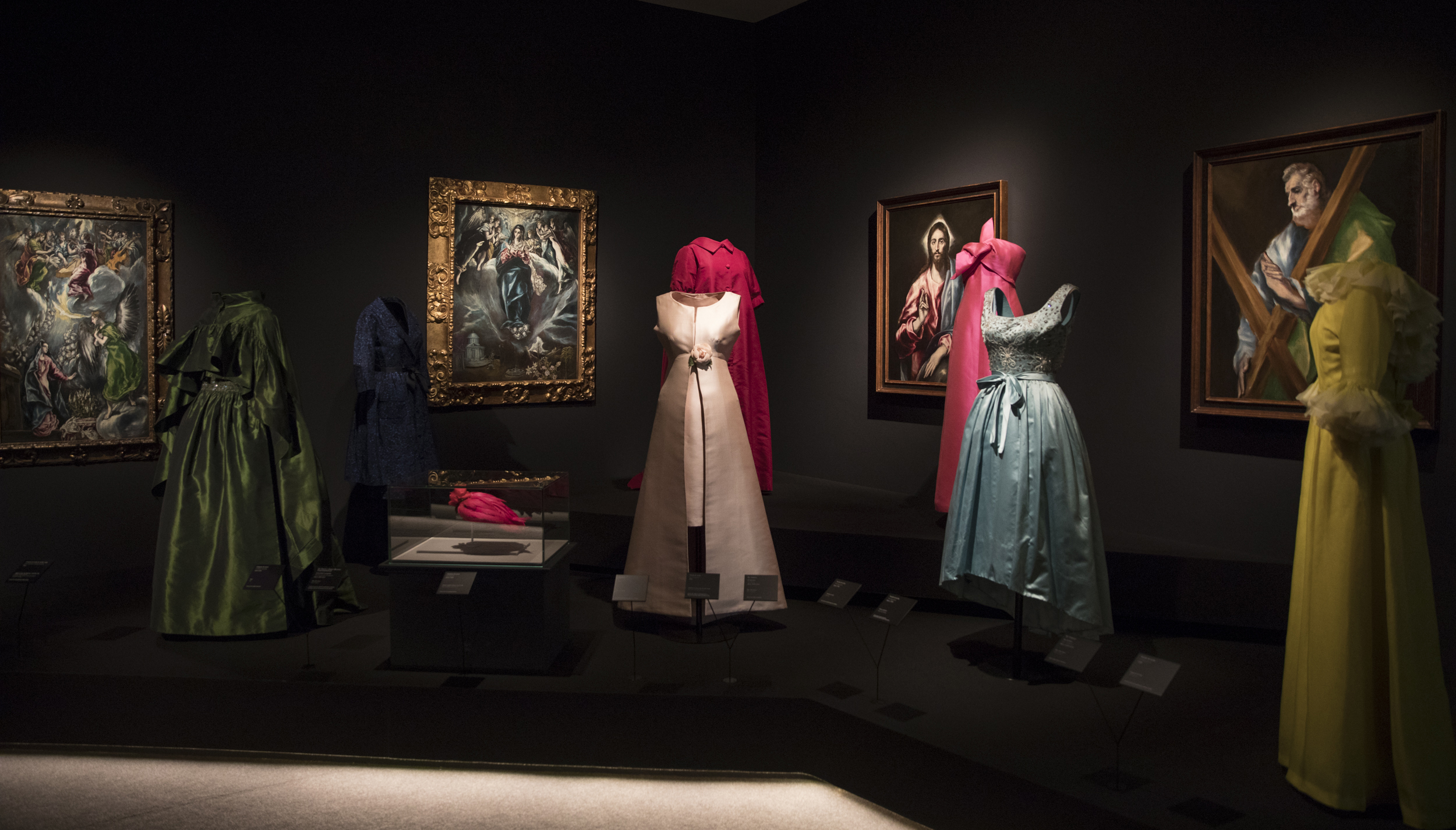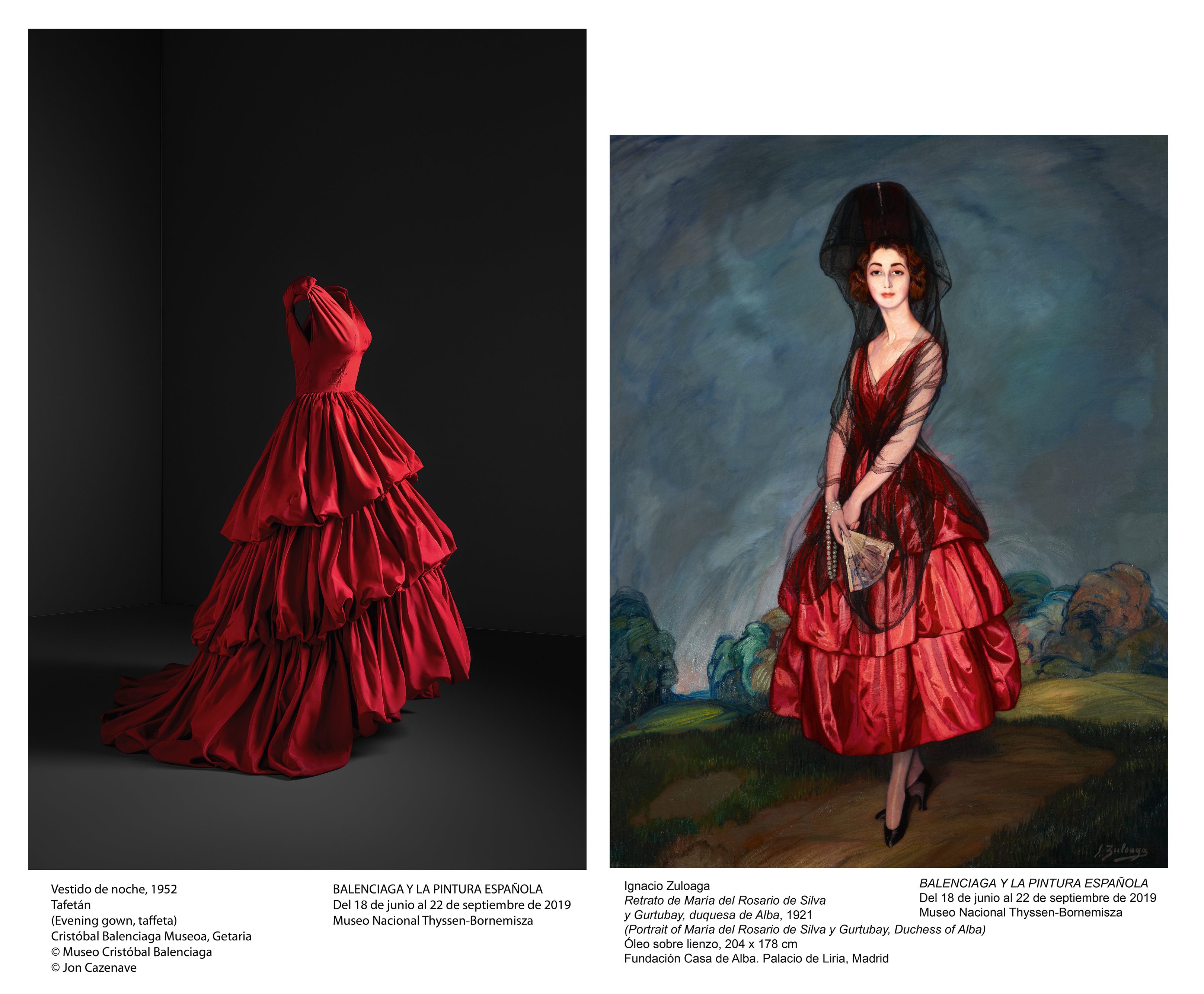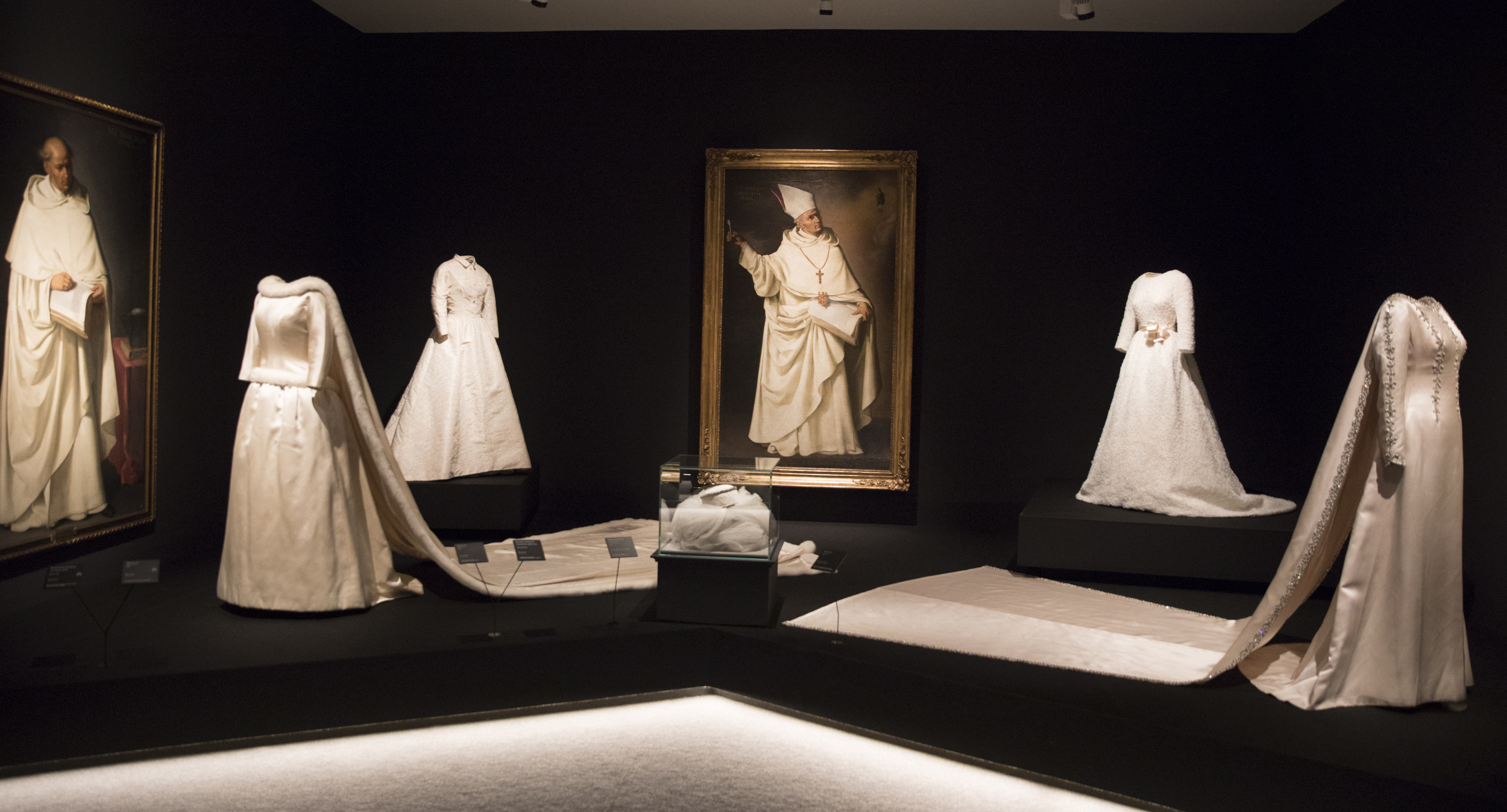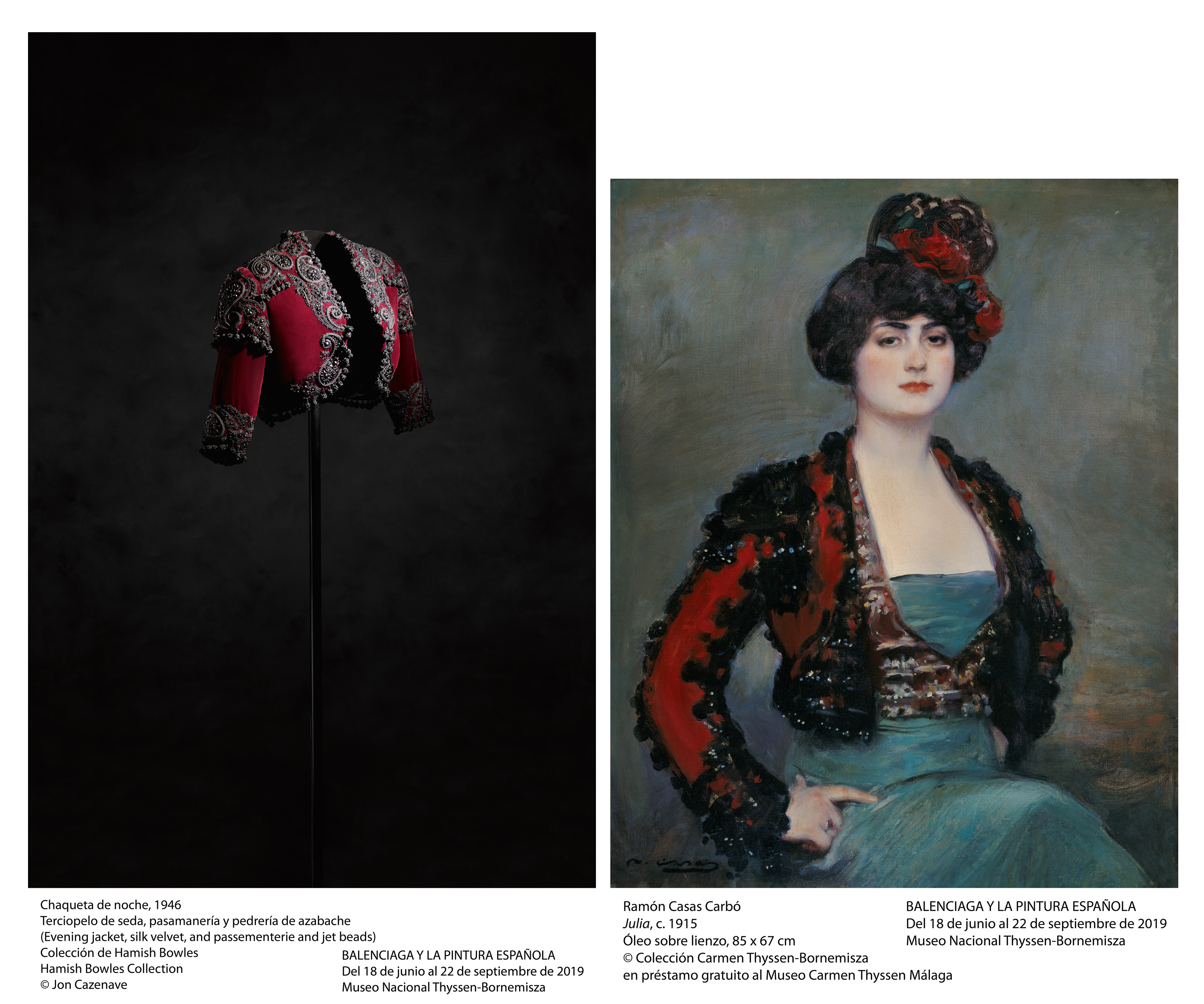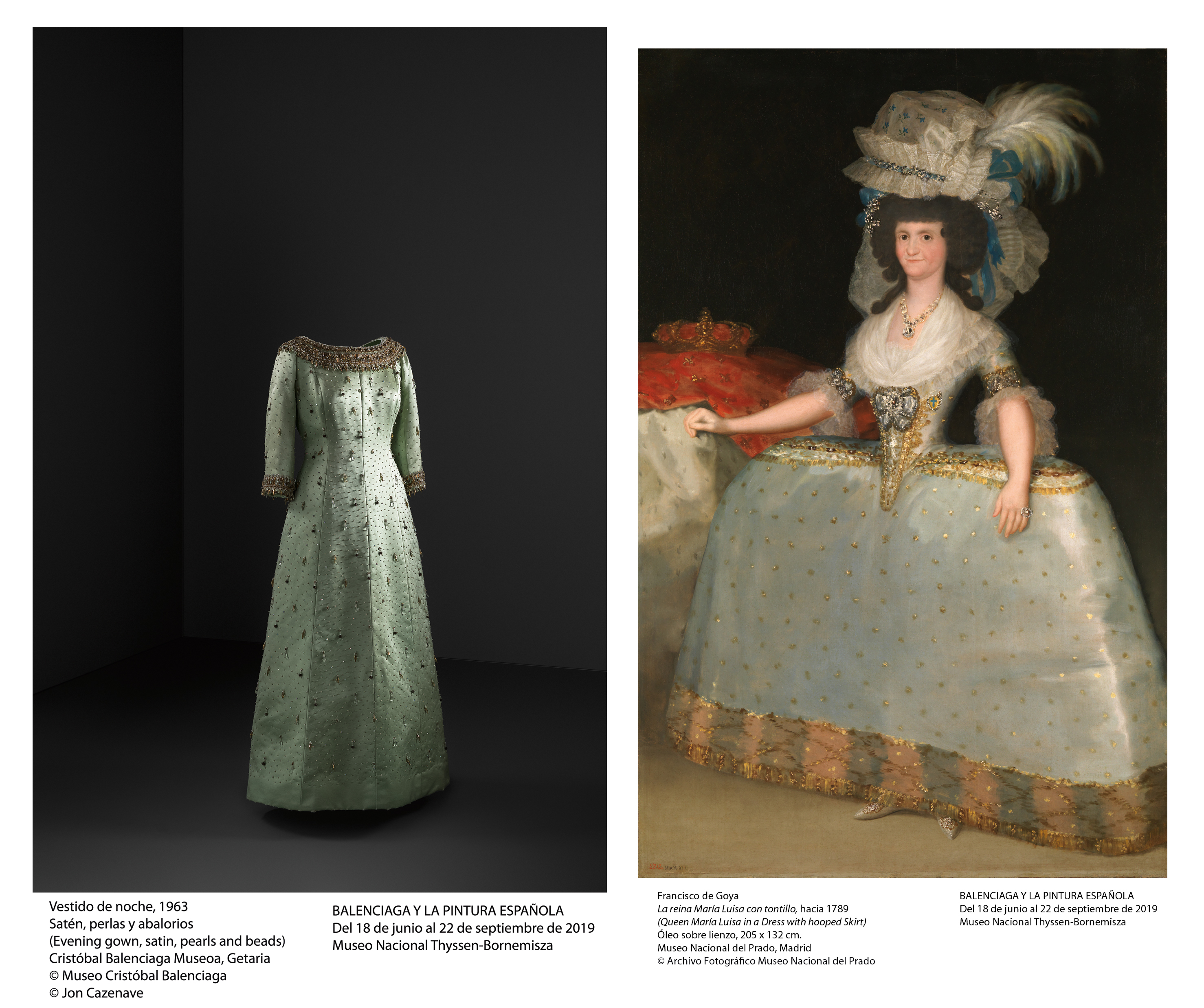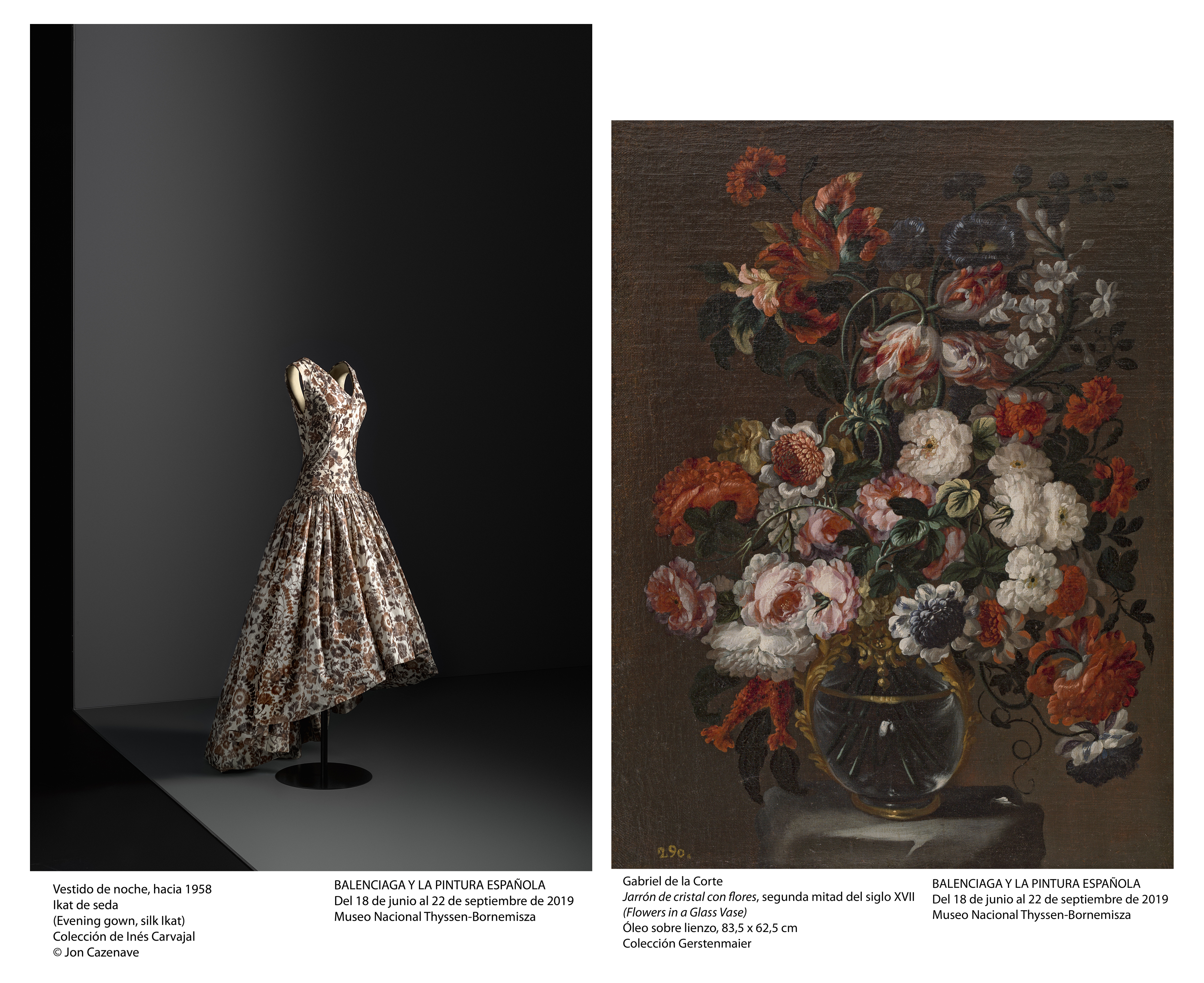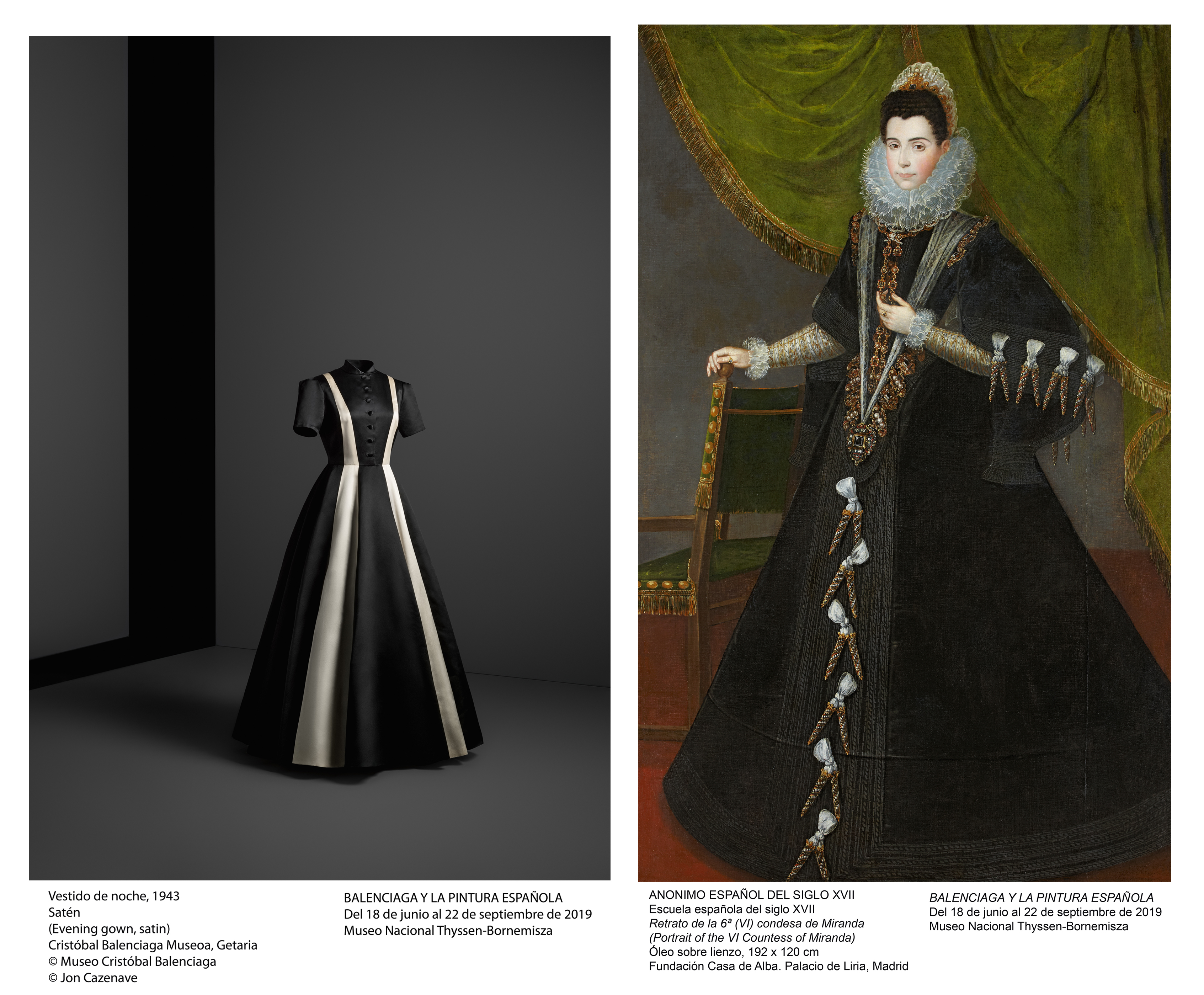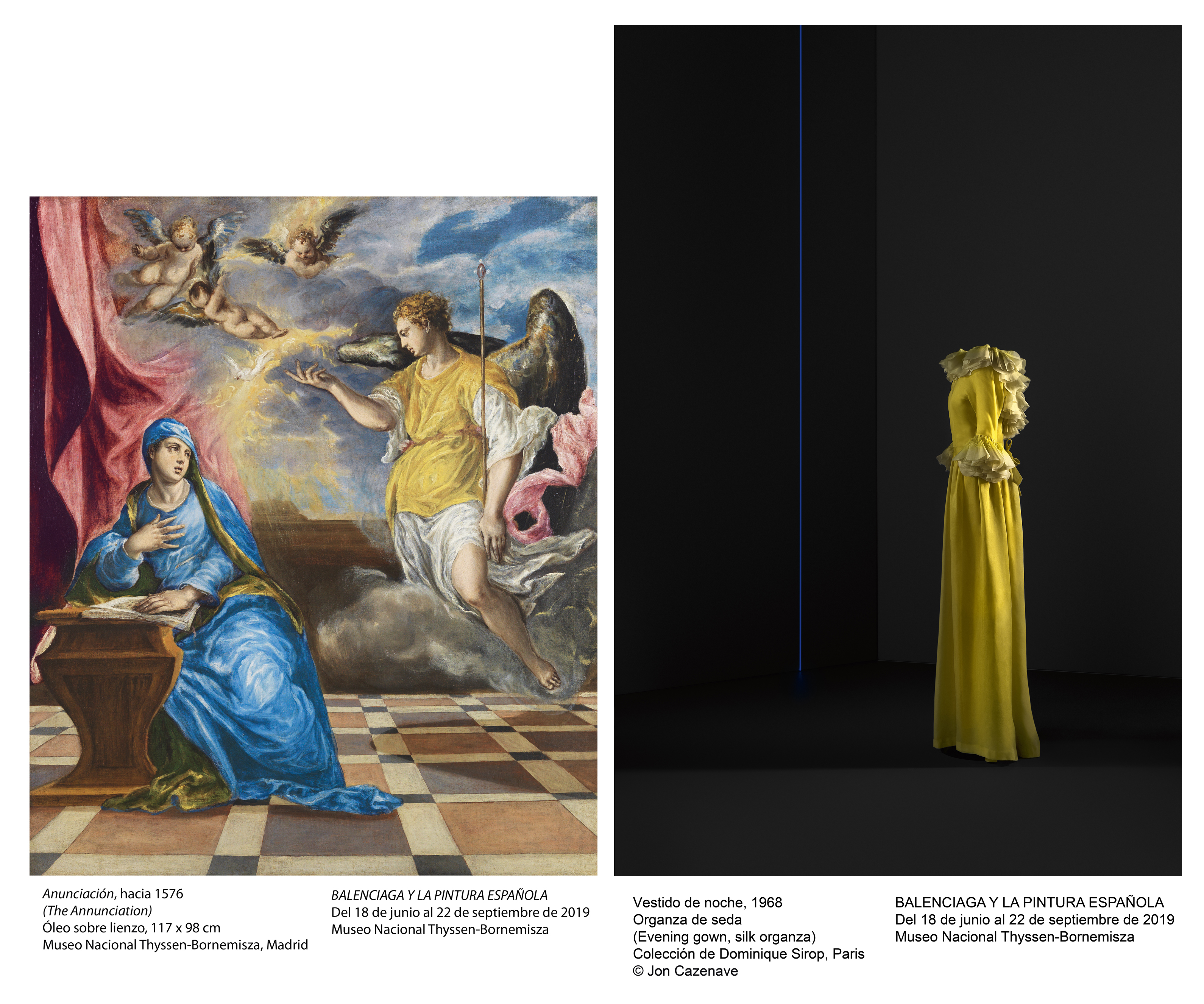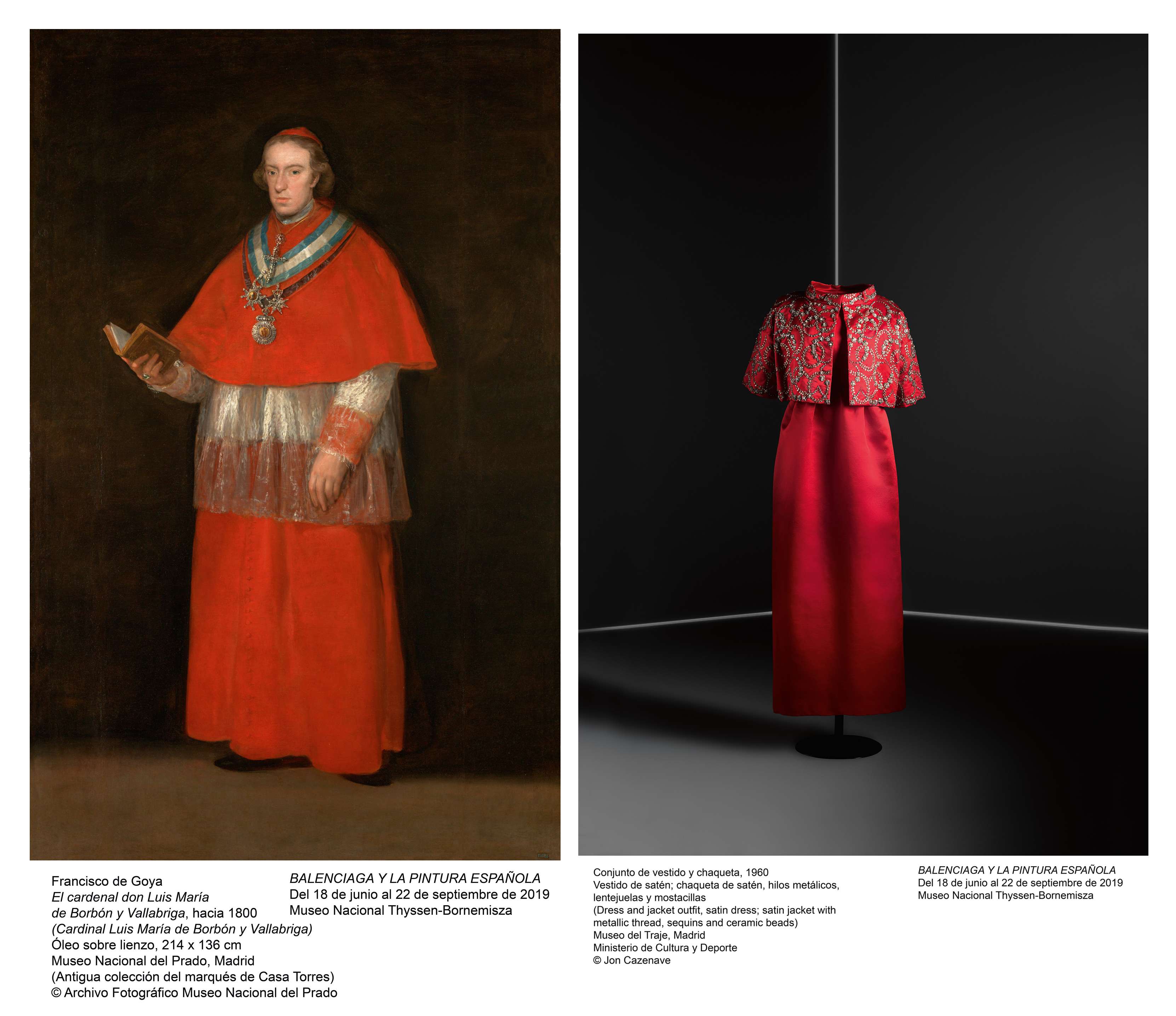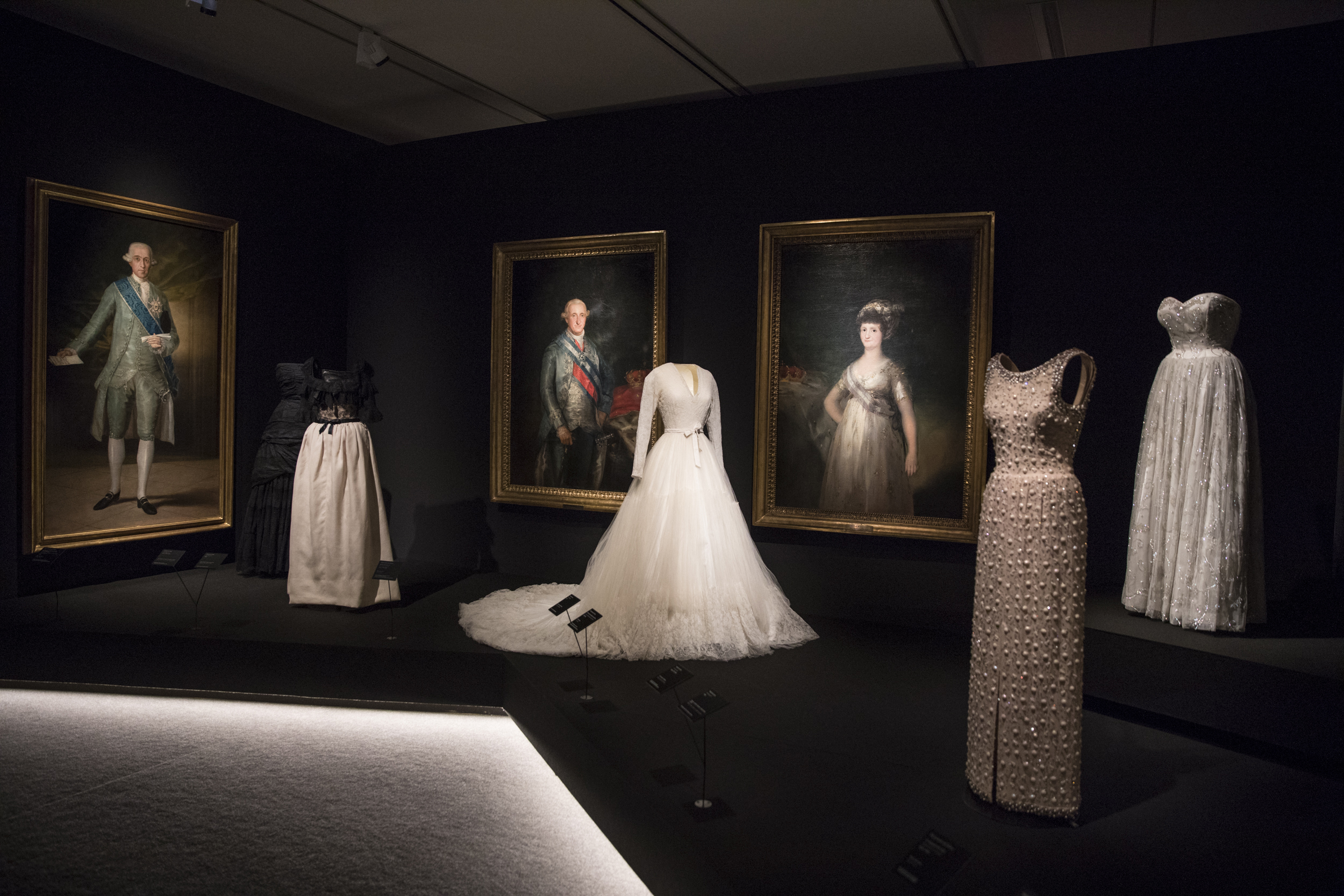
The Thyssen-Bornemisza National Museum has just inaugurated an exhibition that elegantly conveys the creation of Cristóbal Balenciaga with the tradition of Spanish painting from the 16th to the 20th centuries. It is an unusual show where the most admired and influential fashion designer of all time co-features with some of the paintings by great names in the history of Spanish art, one of his main sources of inspiration. This is how ambitious the exhibition ‘ Balenciaga and Spanish painting ‘ is .
The exhibition is curated by Eloy Martínez de la Pera, who has selected for the occasion a total of 90 valuable pieces of clothing, many of them exhibited for the first time and leased from the Balenciaga Museum of Guetaria, Madrid Costume Museum and Barcelona Design Museum, as well as national and international private collections. They are accompanied by the dresses , an exceptional set of 55 paintings, among which are works by El Greco, Velázquez, Murillo, Carreño de Miranda, Zurbarán, Goya, Madrazo and Zuloaga. Altogether it is a selection of paintings from private collections and national museums such as the Prado Museum or the Bilbao Museum of Fine Arts.
The tour of the rooms follows a chronological itinerary through the paintings, accompanied by the dresses linked to each style or to each painter. This creates connections based on conceptual elements, on forms and volumes, on chromatic complicities, which present a fascinating dialogue between fashion and painting, between the creativity of the great Basque designer and his sources of inspiration.
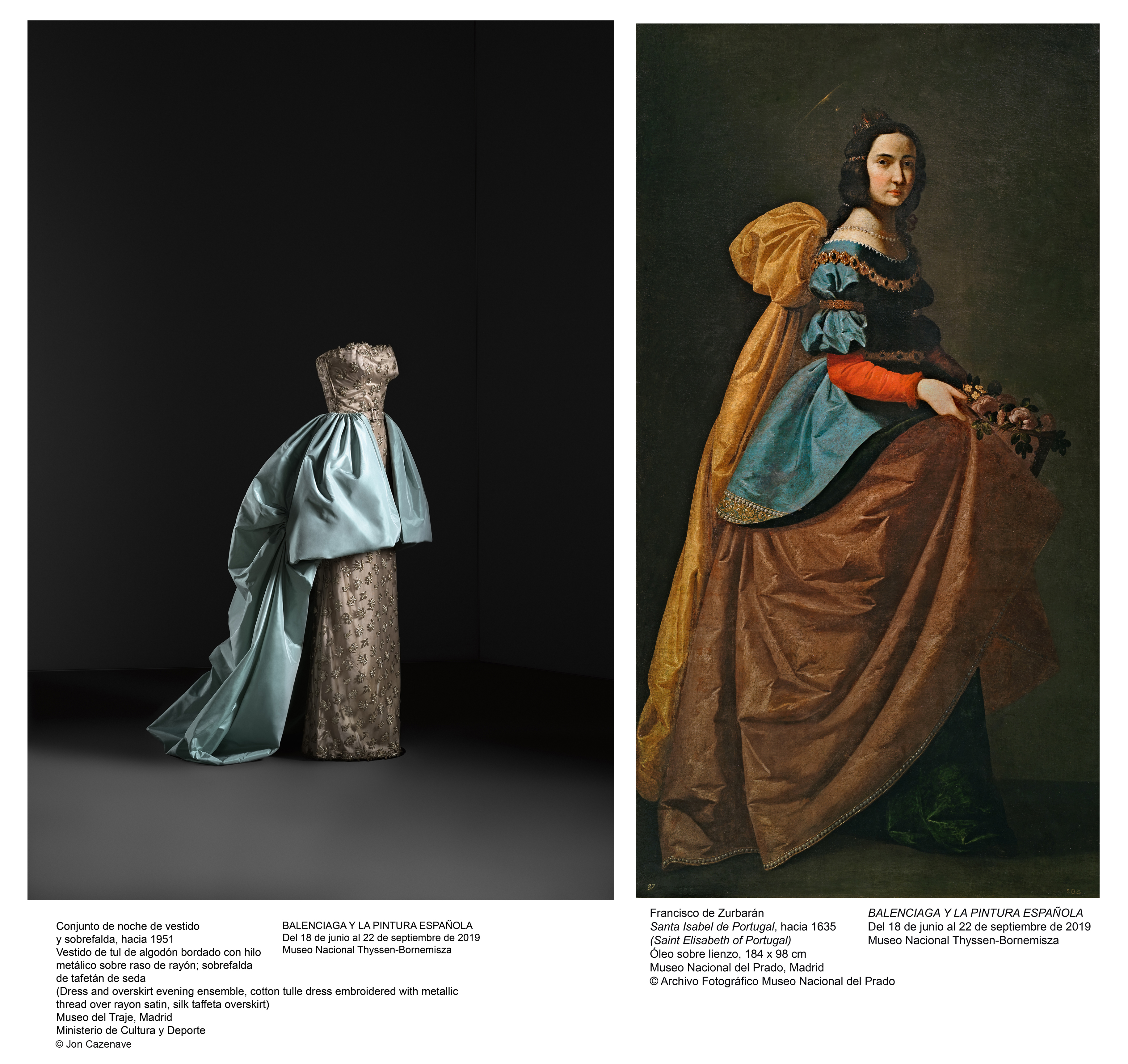
Balenciaga with Spanish art and culture
References to Spanish art and culture were always present in the work of Cristóbal Balenciag a. The simple and minimalist lines of religious habits or the architectural volume of these fabrics are a constant in many of his pieces. The air of a bata de cola of a flamenco dancer that is seen in the ruffles of some dresses or the flashes of a bullfighter’s suit of lights translated with mastery to the embroidered paillette of a bolero jacket , are some examples. Balenciaga continually reviewed the history of art and, with his strong personality and style, maintained those influences even in his most avant-garde period, recovering historical works and reinterpreting them in a modern way.
Cristóbal Balenciaga: “A good couturier must be an architect for the bosses, a sculptor for the form, a painter for the drawings, a musician for harmony and a philosopher for the measure”
Apart from following the chronological trajectory, the route of the exhibition allows us to review art from a different perspective, focusing on painters as creators and transmitters of fashion, and as masters in the representation of fabrics, textures, folds and volumes. Inevitably the exhibition in its entirety pays tribute to black, one of Balenciaga’s fetish colours, and for many of his great trade-marks such as barrel line, sem-tailored , balloon-skirts, tunic , sackdress or baby doll , which conclude at the end of the 60s in abstraction.
“Balenciaga and Spanish painting” is undoubtedly the most ambitious of exhibitions and represents the most complete presentation of this Spanish dressmaker since the first retrospective that was dedicated to him in 1973. The exhibition can be visited until September 22, 2019 at the Thyssen-Bornemisza National Museum in Madrid. The project has the collaboration of Herbert Smith, Freehills and Las Rozas Village .
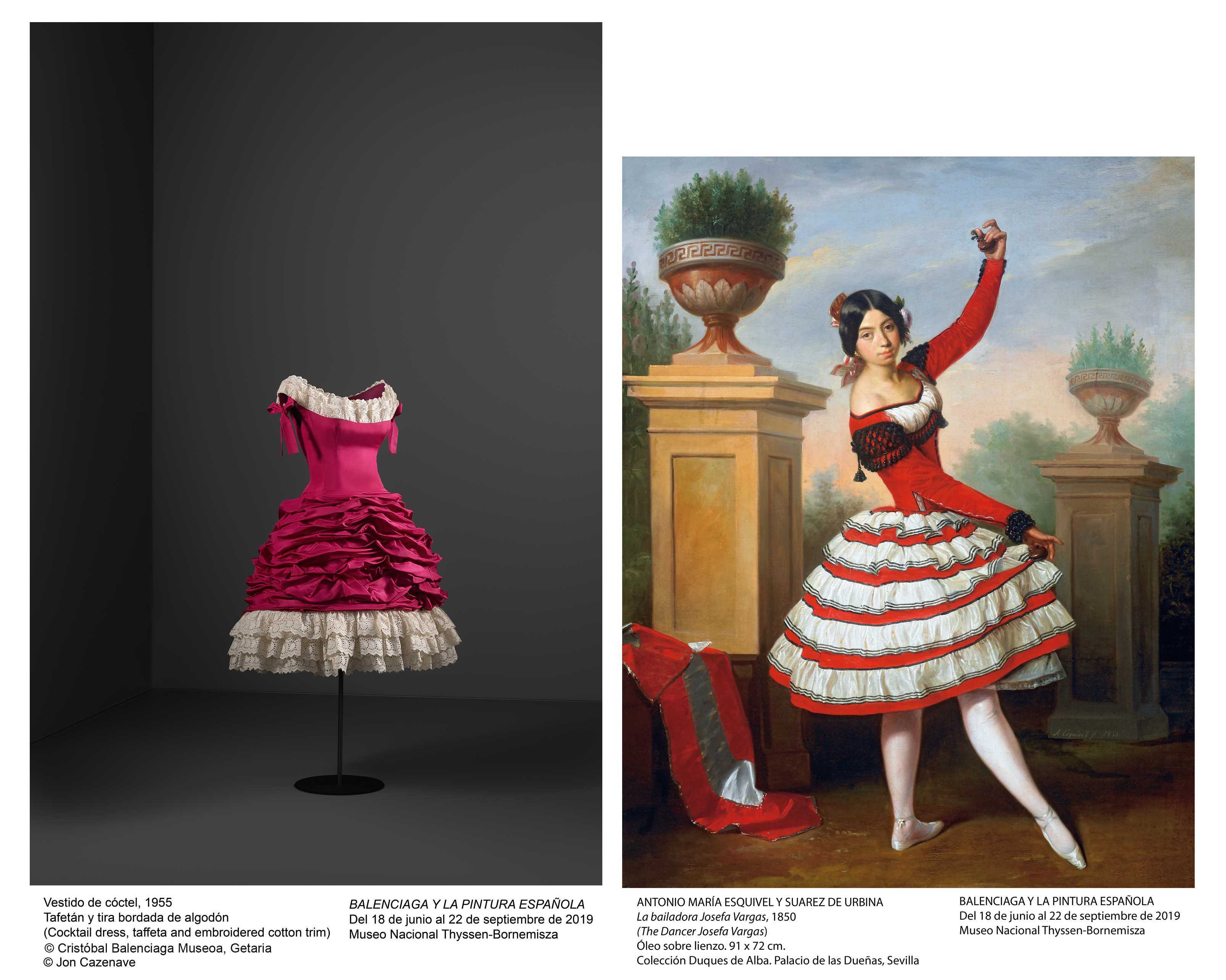
A life influenced by painting
Balenciaga was born in Getaria (Guipúzcoa) in 1895, son of José Balenciaga, fisherman, and Martina Eizaguirre, seamstress. As a child he began his craft with his mother, who sewed for wealthy families in the area, including the Marquis of Casa Torres, who spent summers at the Aldamar Palace in the Guipuzcoa town, also known as Ona view . It was there that the young Cristóbal came into contact with the taste of the aristocratic elite and where he could admire costumes and fabrics from the best tailors and fashion and textile shops in London and Paris. It was also there where he had the opportunity to contemplate and enjoy the magnificent collection of art that the marquises owned and their extensive library. This excellent introduction to the world of fashion and art, coupled with his extraordinary sensitivity, was what undoubtedly led him to dedicate his life to design from a very early date.
In 1939, Balenciaga was directly inspired by Velázquez for the design of his Infanta dress, a modern reinterpretation of the costumes with which the painter portrayed the Infanta Margarita of Austria and which the designer presented that same year in Paris. Three years earlier, in 1936 and as a result of the outbreak of the civil war in Spain, Balenciaga had moved to the French capital. He was already in a period of full creative maturity, having founded in the previous decades fashion establishments in San Sebastian, Madrid and Barcelona and having among his clientele high society and the Spanish Royal Family. In August 1937 he opened his workshop on George V Avenue in Paris. The creations of Balenciaga in these years were impregnated with the cultural context of their country of origin, turning this period into a tribute to the aesthetics of ‘all things Spanish’.
With his innovative style, total mastery of couture and a high level of demand, he soon became one of the most influential designers on the international scene. In Paris he came into contact with a cosmopolitan clientele and also began to attract the attention of the media around the world that elevated him as the “king of haute couture”. He had a predilection for weighty fabrics, which he enriched with handmade embroidery, rhinestones or sequins. With scarcely any cuts or seams he created dresses with straight or rounded shapes, giving his garments a perfect, almost sculptured finish. His sense of proportion and measure, handling of technique and search for excellence brought him the admiration of his contemporary colleagues -like Christian Dior, who considered him “the master of all of us”, or Coco Chanel, who described him as “the only authentic couturier ” -; and in his workshop or with his advice some of the most important designers of the 20th century were trained, such as Hubert de Givenchy , Emanuel Ungaro , Óscar de la Renta or Paco Rabanne.
Photos: Leased by the Thyssen-Bornemisza National Museum
